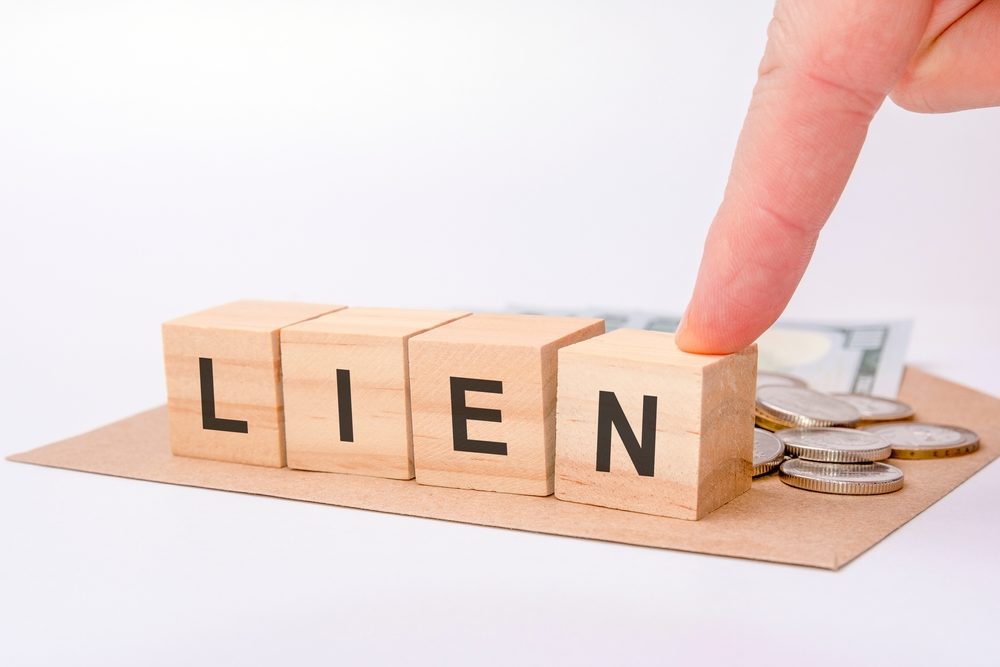LIENS
Welcome to Synergy’s blog page dedicated to the topic of lien resolution. Our team of subrogation experts share their InSights and knowledge on the latest developments and best practices in lien resolution. Stay up-to-date with the latest trends and strategies to ensure that you have the information you need to navigate the complexities of lien resolution.
Navigating hospital and provider liens in personal injury cases can be a labyrinthine process. These liens trigger ethical considerations, generally involve inflated charges, and have intricate state-specific regulations to navigate. For personal injury attorneys, understanding these liens and devising effective strategies to manage them is crucial.
The Challenge with Hospital Liens
Hospital bills often include charges that greatly exceed actual costs. Many hospitals leverage lien rights, often supported by statutes, to attempt to secure payment for these excessive charges. Negotiating from full billed charges is a strategic mistake; these figures are often inflated and not reflective of the true cost of care. Instead, the focus should be on negotiating from a reasonable value standpoint.
Is the claim a lien or debt?
The first step in resolving hospital/provider claims is understanding whether you’re dealing with a lien or a debt. A lien is a legal claim on settlement proceeds, generally established by statute or contractual agreement. Conversely, a debt arises from unpaid medical care. When you are dealing with a debt, the question for the personal injury victim as a starting point is whether they want to resolve the debt from their settlement proceeds. In most instances it does make sense to encourage resolution so as to avoid having debt collection pursued in the future.
In contrast, liens are a legal claim against the personal injury recovery, borne out of statutes and ordinances. For example, while California has consumer-friendly lien laws, Florida’s regulations vary by county. Familiarizing yourself with state-specific lien statutes and common law is essential for effective resolution for a valid lien.
Best Practices for Resolution
- Identify and verify the existence of any hospital lien claims versus just a debt.
- Once identified, check to see if the hospital has properly “perfected” the lien under appropriate state law. Also, determine under your state law the legal limitations on a hospital’s right to reimbursement.
- Confirm whether the hospital has already received any payments from insurance and whether there is a balance.
- Dispute any attempts to balance bill if payments were received from insurance.
- Engage in negotiations using the following as a guide to different available arguments (Note: Not all will apply, assess your case and use appropriate arguments):
- Challenge any unrelated charges in the hospital billing.
- Use reasonableness arguments for the charges.
- Make any arguments available under state statutes for limitations on reimbursement.
- Argue equitable doctrines like common fund or made whole, if available under state law. Raise arguments related to client hardship, limited insurance policy limits, and comparative fault to negotiate further reductions in the lien.
- Use pro rata share types of arguments in cases with multiple lienholders, argue for a pro rata distribution of a set amount of the settlement pool of funds.
- Finalize resolution by obtaining a complete release of the lien from the hospital.
Conclusion
Resolving hospital/provider claims is indeed a complex task, but with a strategic approach, attorneys can effectively manage these claims. By focusing on reasonable charges, understanding local lien laws, and employing robust negotiation strategies, you can mitigate the impact of hospital/provider claims and ensure that your client’s net recovery is protected.
Working with specialized lien resolution companies can provide essential expertise and prevent costly mistakes when it comes to hospital & provider claims. If you want to find out more, contact us today to Partner with Synergy for lien resolution.
Written by: Jason D. Lazarus, J.D., LL.M., MSCC | CEO
When settling cases involving clients with federal or military healthcare coverage, understanding the complex landscape of lien recovery rights is crucial. This blog highlights key issues and strategies related to federal employee and military healthcare liens.
FEHBA Liens
The Federal Employees Health Benefits Act (FEHBA) covers federal employees, retirees, and their families through specialized health plans administered by private carriers under the Office of Personnel Management (OPM). FEHBA’s preemption of state laws is pivotal; as affirmed by the Supreme Court in Coventry Health Care of Missouri Inc. v. Nevils, FEHBA preempts state laws that might limit these plans’ subrogation rights. This ruling solidified that FEHBA plans can demand full reimbursement from settlements, similar to ERISA plans, although FEHBA plans typically contain more lenient recovery provisions.
To address FEHBA liens, start by reviewing the plan’s language. While FEHBA liens are strong, potential reductions are still possible, given that the plan’s recovery provisions may provide needed negotiating leverage.
Military Liens
Military healthcare programs—such as Veterans Health Administration (VHA), Champ VA, and Tricare—each have distinct reimbursement rights governed primarily by the Federal Medical Care Recovery Act (FMCRA). Unlike other types of liens, these programs do not involve traditional liens but rather direct claims against responsible third parties.
Veterans Health Administration: Recovery rights stem from 38 U.S.C. § 1729 and FMCRA. The VA can pursue reimbursement claims connected to third-party settlements. For the VA, the resolution process involves requesting bills and navigating a tiered review system for compromise or waiver requests.
Tricare: Governed by similar provisions, Tricare’s recovery rights are outlined in 32 C.F.R. §199.12. Tricare does not require set-asides but considers future medical expenses, and recovery claims are managed through the JAG office. Challenges with Tricare include managing attorney fees and determining the military’s right to recover from first-party auto insurance policies.
Key Issues:
- Attorney Fees: Tricare’s form protection agreement often prohibits the government from paying attorney fees, creating complications in settlement negotiations.
- First-Party Auto Insurance: The right to recover from uninsured motorist (UM) coverage is debated and often hinges on specific policy language, as demonstrated in Government Employees Ins. Co. v. Andujar.
Conclusion
FEHBA and military healthcare liens present distinct challenges. FEHBA’s federal preemption necessitates focus on plan-specific language to negotiate reductions, while military liens involve navigating direct claims under FMCRA and managing complex issues like attorney fees and UM insurance recovery.
Working with specialized lien resolution companies can provide essential expertise and prevent costly mistakes when it comes to FEHBA & military liens. If you want to find out more, contact us today to Partner with Synergy for lien resolution.
Written by: Jason D. Lazarus, J.D., LL.M., MSCC | CEO
Lien resolution in personal injury cases is complex, and handling it in-house poses significant challenges. To explore the why, it is important to consider key common questions:
What are my legal obligations as plaintiff’s counsel and am I personally liable?
Attorneys must ensure all liens are properly identified and resolved, which involves adhering to ethical rules and potential personal liability for unresolved liens.
Is there a lien? Reimbursement obligation? Just a debt?
Determining whether a claim is a lien, a reimbursement obligation, or just a debt requires meticulous investigation and analysis. This process is time-consuming and requires attention to detail to ensure all obligations are accurately identified.
Is the reimbursement obligation owed limited to past payments or does it also include future payments?
Understanding whether reimbursement includes only past payments or also future ones adds complexity, requiring careful interpretation of plan terms.
Are there any state-specific laws peculiar to the jurisdiction that impact lien resolution for the client?
State-specific laws affect lien enforceability and resolution, necessitating up-to-date knowledge of varied regulations across jurisdictions.
For non-government benefit plans, what law applies? State or federal? Is it governed by ERISA, FEHBA, FMCRA, or state law? Combination of laws?
Navigating whether state or federal laws (e.g., ERISA, FEHBA) govern non-government benefit plans can be challenging, especially in multi-state cases.
Who is the plan administrator and recovery vendor for non-government plans?
Attorneys must identify the proper contractor then establish communication with these entities, understand their lien recovery processes, and negotiate accordingly.
Can the plan or vendor actually prove it is the type of plan it claims to be? And its recovery rights under the law?
Scrutinizing the legitimacy of plans and their claimed recovery rights requires thorough legal research and sometimes challenging lien holders’ claims.
When looking at the client’s net recovery, are they made whole and is reimbursement to the lien holder proper?
Ensuring that clients are made whole while balancing the required reimbursement to lien holders is a delicate task. Attorneys must navigate the complexities of lien negotiations to maximize the client’s net recovery.
What standard reductions or other reductions are available under state or federal statutes for the applicable lien?
Applying standard reductions and exploring other reduction options requires detailed knowledge of relevant statutes and legal defenses.
Conclusion
The intricate nature of lien resolution often makes it challenging for law firms to handle alone. Attorneys must navigate a labyrinth of legal obligations, complex negotiations, and meticulous documentation to protect their clients’ interests. This is why outsourcing makes sense for most types of healthcare liens.
For a deeper dive on this subject, download our white paper titled “The Daunting Task of Resolving Liens for Personal Injury Law Firms” by clicking HERE. To get started with outsourcing lien resolution by partnering with Synergy contact us TODAY.
Medicaid liens often arise in personal injury cases where the injured party is indigent, and the program has covered the client’s medical expenses. Under federal law, Medicaid programs must recover these expenses from third-party settlements. However, the process is governed by both federal and state laws which are nuanced but protect the Medicaid beneficiary’s rights while allowing Medicaid to recover a portion of its costs.
Medicaid’s Right to Recover
Every state must have laws allowing Medicaid to recover funds for injury-related medical care from settlements or judgments. Federal law mandates that Medicaid recipients assign their right to recover these expenses to the state.
Limitations on Medicaid Recovery
Federal law mandates that states participating in Medicaid must enact third-party liability laws, ensuring that states can recover medical expenses from liable third parties. However, this recovery is limited by the anti-lien provisions of federal law, which places limits on the state’s ability to impose liens on any property of a Medicaid recipient. While the third-party liability provisions required by federal Medicaid law is an exception to the anti-lien provisions, there is a tension between these laws which has led to some key United States Supreme Court decisions related to Medicaid liens.
Key US Supreme Court Medicaid Decisions
- Ahlborn v. Arkansas DHS (2006): In Ahlborn, the Court ruled that Medicaid agencies cannot recover from portions of a settlement designated for non-medical damages, such as pain and suffering or lost wages. This ruling was hailed as a major victory for injury victims, significantly reducing the financial burden of Medicaid liens due to the pro-rata approach the court seemingly sanctioned.
- Wos v. EMA (2013): Reaffirmed Ahlborn in holding that Medicaid can only recover from funds designated for medical expenses, striking down arbitrary state recovery statutes.
- Gallardo v. Marstiller (2022): Expanded Medicaid’s right to recover from both past and future medical expenses in settlements, complicating lien resolution further.
Conclusion
In conclusion, understanding Medicaid’s recovery rights—and the protections offered by cases like Ahlborn and Wos—is crucial for securing fair outcomes for injury victims. Also, the now somewhat changed landscape due to Gallardo is an important consideration. Understanding the limits of Medicaid’s recovery rights, while ensuring compliance with state laws, is essential for maximizing your client’s net recovery. By navigating these complexities and applying pro-rata reductions based on Ahlborn and Wos, you can reduce Medicaid liens and maximize the client’s net settlement.
Working with specialized lien resolution companies can provide essential expertise and prevent costly mistakes when it comes to Medicaid liens. If you want to find out more, contact us today to Partner with Synergy for lien resolution.
The decision to outsource lien resolution is pivotal in a personal injury practice as it can significantly improve both the efficiency of the firm and financial outcome of a client’s case. With varying complexities and regulatory requirements, understanding which healthcare liens benefit from external expertise and which can be managed internally is crucial. Here’s a breakdown to guide your decision-making process:
Liens Suitable for Outsourcing
The following liens may benefit from hiring outside lien resolution experts to resolve them for a variety of reasons: Medicare conditional payments; Medicare Advantage liens; Medicaid liens, ERISA plan liens; Federal Employee Health Benefits Act (FEHBA) liens; military plan liens, private health and hospital/provider liens. All of these liens involve complex regulatory schemes or complicated legal issues that make them much more difficult to resolve without the requisite specialized knowledge. For example, Medicare has specific prescribed timelines and regulatory requirements as well as multiple methods for requesting a compromise or waiver. Medicaid varies greatly from state to state as it is governed by Medicaid third party liability statutes. ERISA plans have their own unique set of challenges for trial lawyers. These nuances for different lien types makes it challenging to resolve without specialized experts who understand all of the complicated issues that come with specific types of liens.
Liens Typically Not Appropriate for Outsourcing
However, some liens may be better resolved in-house due to their specific characteristics or the nature of the relationship with the lienholder. The following types of liens are typically better handled in-house: Small liens of $2,000 or less; local provider liens; worker’s compensation liens; Medicaid estate recovery liens; child support liens and pre-settlement funding liens. All of these involve either inefficiencies or specific characteristics that don’t make them good candidates for outsourcing. For example, a local provider a law firm has an ongoing relationship might not benefit from a third-party lien resolution company negotiating with them. Workers’ compensation liens, Medicaid estate recovery liens, child support liens and pre-settlement funding liens are all governed by state specific laws which are better addressed by those most familiar with that state’s applicable laws.
Conclusion
Deciding whether to outsource lien resolution involves evaluating the type of lien, its complexity, and your firm’s expertise. By understanding which liens benefit from specialized handling and which can be resolved in-house, you can optimize cost-efficiency and client satisfaction. This strategic approach ensures that lien resolution is handled effectively, whether by leveraging external expertise or utilizing internal resources.
If you would like to read more on this subject click HERE to download our white paper titled “A Guide To Resolution: Which Liens to Outsource and Those to Keep In-House. If you are ready to get started with outsourcing today and want to partner with Synergy, contact us TODAY.
Written by: Jason D. Lazarus, J.D., LL.M., MSCC | CEO
Navigating ERISA liens can be a daunting task, given the complexity of the Employee Retirement Income Security Act (ERISA) and its impact on self-insured health plan reimbursement. Although a comprehensive exploration of ERISA is beyond this blog, understanding some key strategies can help in resolving ERISA liens effectively.
ERISA Overview
Enacted in 1974, ERISA aims to protect employee benefit plan participants by enforcing standards of conduct for plan managers and ensuring plan funds are secure. However, its application in lien resolutions often draws criticism, particularly concerning the practical protection it offers.
ERISA and Health Plans
ERISA governs most employer health plans, with notable exceptions including government and certain religious plans. ERISA health plans generally include subrogation clauses, requiring reimbursement for injury-related expenses paid by the plan. Section 502(a)(3) of ERISA allows these plans to seek equitable relief for enforcement, often through equitable liens or constructive trusts. The law’s intricacies, slightly clarified by the Supreme Court, reveal that the statute in its application is far from straightforward.
Key Supreme Court Rulings
- Sereboff v. Mid Atlantic Medical Services, Inc. (2006): The Supreme Court confirmed that ERISA plans could enforce reimbursement provisions under equitable principles, affirming the power of self-funded plans to claim recovery via equitable liens.
- U.S. Airways, Inc. v. McCutchen (2013): The Court reinforced that written ERISA plan terms take precedence over equitable doctrines like “make whole” and “common fund.”
Select Strategies for Lien Reduction
While there are many tactics you can use to possibly reduce an ERISA lien, here are a few key ones to consider:
- Determine Plan Funding Status: Identify whether the plan is self-funded or fully insured. Self-funded plans are governed by ERISA and are harder to reduce under Supreme Court precedent, while fully insured plans generally will be subject to state law or common law principles. Review the Summary Plan Description (SPD) and Master Plan to determine funding status.
- Utilize ERISA Section 1024(b)(4): Request plan documents directly from the plan administrator, not from third-party administrators or recovery contractors. This legal right via the document request helps assess the strength of the plan’s claim and identify potential leverage points, such as challenging the applicability of equitable principles.
- Examine Plan Language: Look for ambiguities or specific provisions in the plan’s reimbursement clauses. Ambiguities can be used as leverage to reduce the amount owed to the lien holder.
- Leverage Equitable Doctrines: If the plan language does not explicitly reject doctrines like “make whole” or “common fund,” use these principles to argue for lien reduction. Make arguments based on partial reimbursement or proportional sharing of legal costs.
- Address Equitable Defenses: Use defenses like unjust enrichment or undue hardship to argue against full reimbursement, where applicable.
Conclusion
Effectively addressing ERISA liens requires a deep understanding of the plan’s funding status, precise examination of plan documents, and strategic application of legal and equitable arguments. The US Supreme Court’s ruling in McCutchen emphasized the importance of plan language, making it crucial to use Section 1024(b)(4) requests to your advantage. By leveraging these strategies, you can begin to navigate ERISA liens more effectively and potentially achieve optimal reductions in a claimed ERISA lien.
Working with specialized lien resolution companies can provide essential expertise and prevent costly mistakes when it comes to ERISA liens. If you want to find out more, contact us today to Partner with Synergy for lien resolution.
Written by: Jason D. Lazarus, J.D., LL.M., MSCC | CEO
BLOGS
READY TO SCHEDULE A CONSULTATION?
The Synergy team will work diligently to ensure your case gets the attention it deserves. Contact one of our legal experts and get a professional review of your case today.





